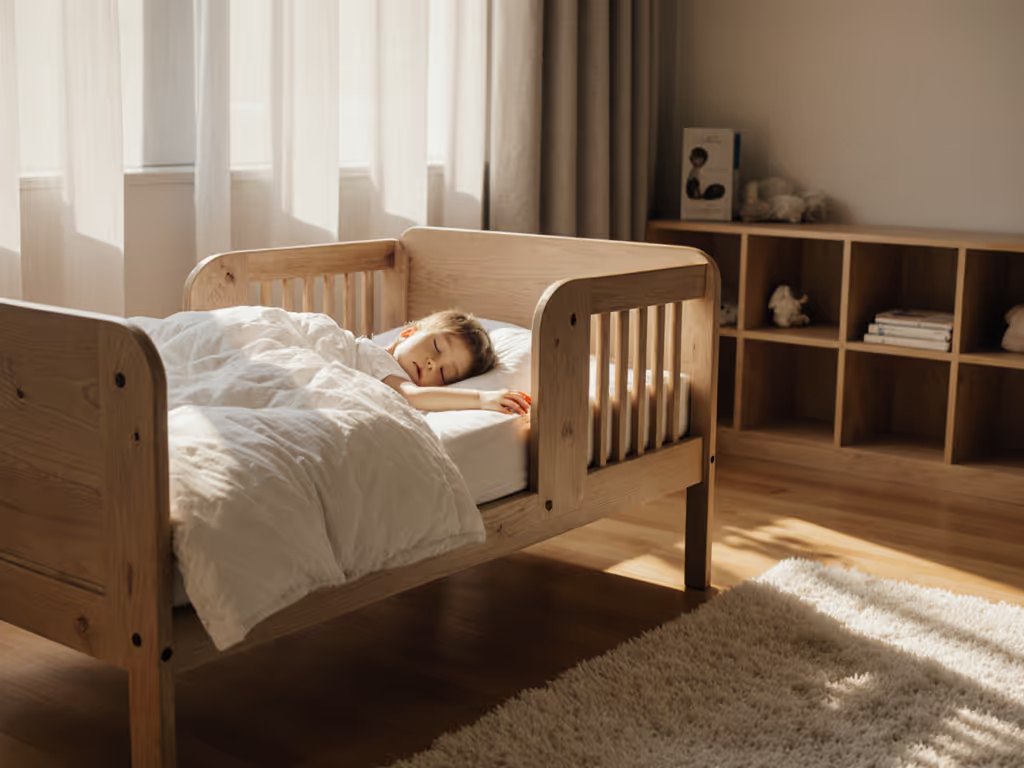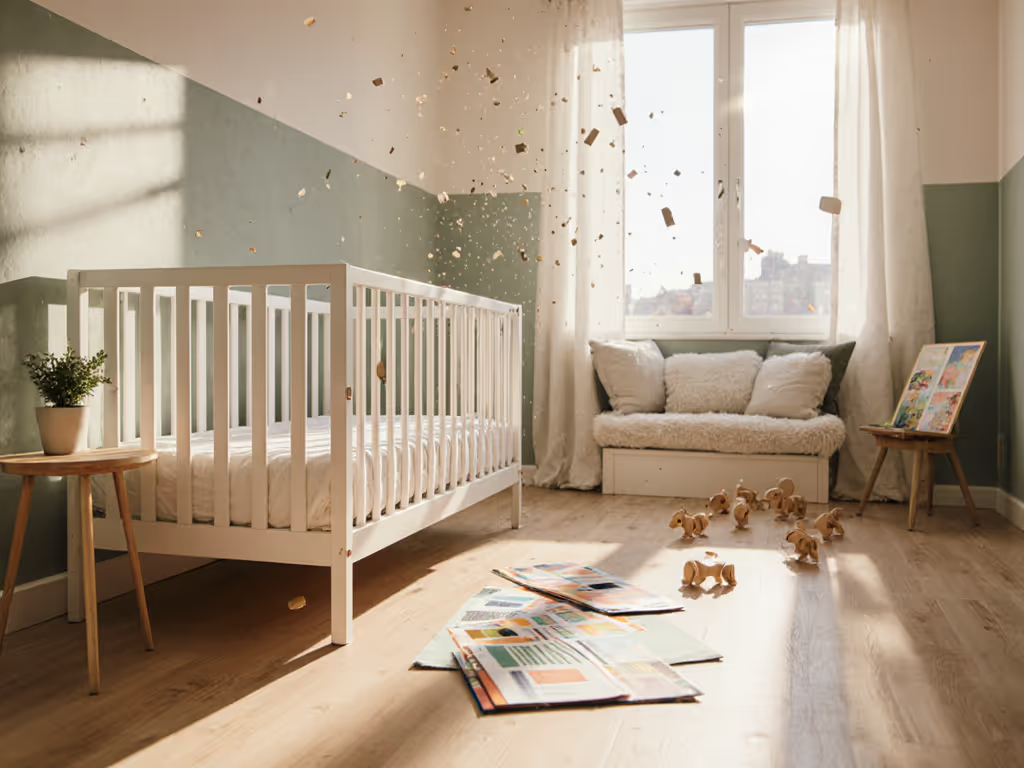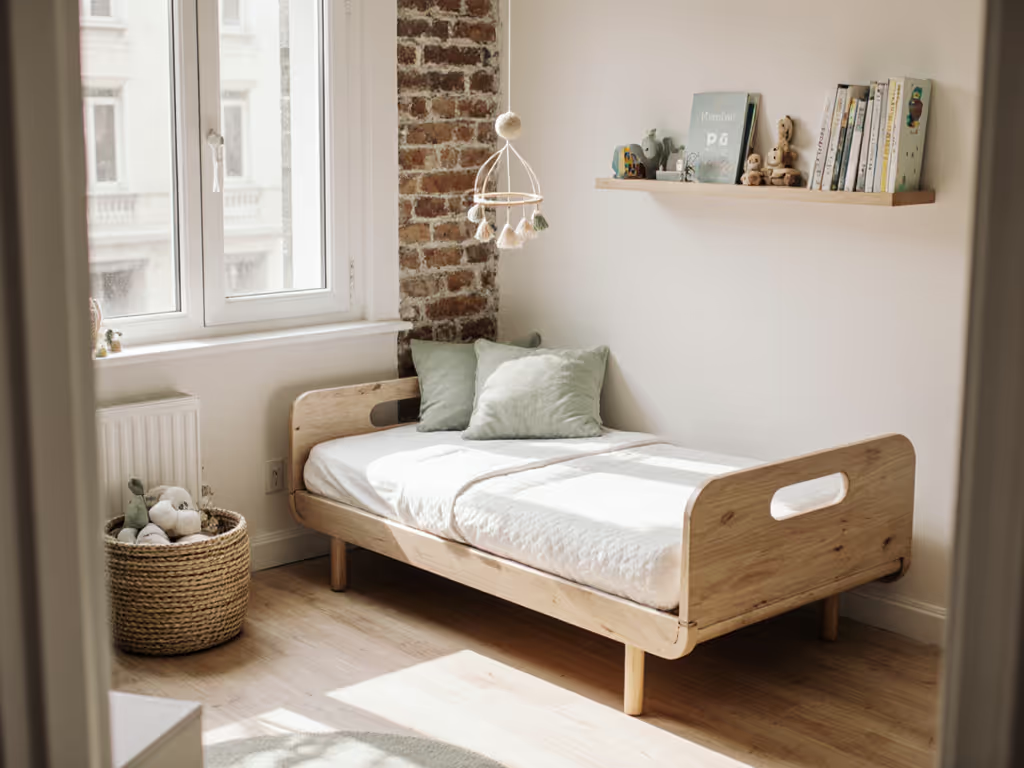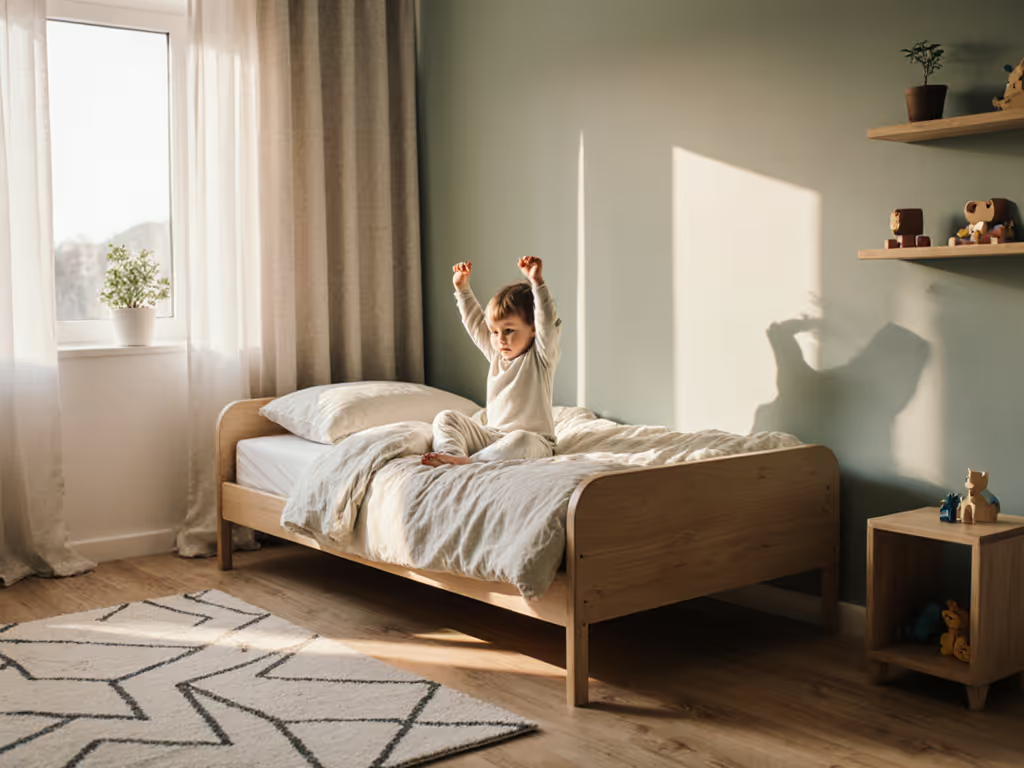
Calmer Rooms: Eco-Friendly Toddler Beds Compared
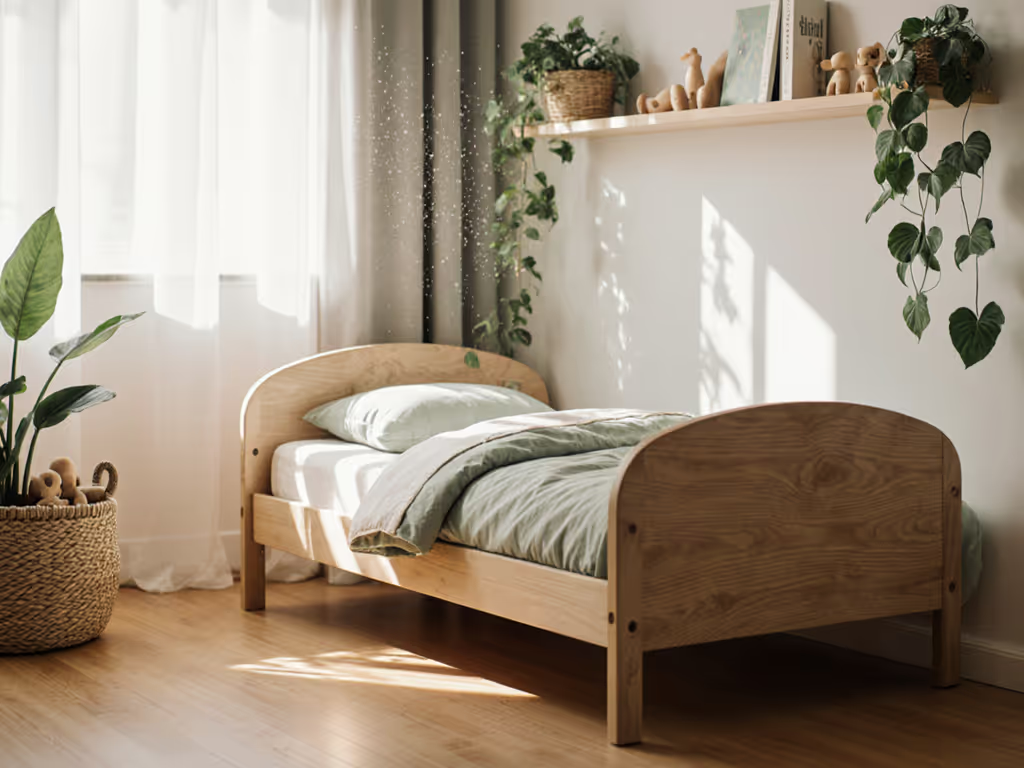
When it comes to creating a peaceful nursery environment, your choice of baby bed matters more than you might realize. As a materials researcher turned parent, I've learned that eco-friendly toddler beds aren't just about sustainability claims, they're foundational to creating genuinely calm rooms where children (and parents) sleep better. The invisible chemistry of materials affects air quality, mood, and health in ways that padded rails and cute designs never will. If it smells, it tells (a lesson I learned the hard way when our first toddler bed arrived smelling like a paint aisle).
Why should I care about VOCs in toddler beds?
Toddlers spend 10 to 12 hours daily in their beds, breathing air that's literally inches from their developing lungs. Volatile organic compounds (VOCs), chemicals that evaporate at room temperature, can trigger headaches, irritability, and sleep disturbances even at levels below what's considered "safe" by regulatory standards.
Most standard toddler beds use finishes and adhesives that contain formaldehyde, benzene, and other concerning compounds. The off-gassing timeline varies significantly: particleboard beds treated with melamine finishes can release VOCs for 2 to 5 years, while properly finished solid wood beds typically off-gas within weeks. This isn't just about immediate smells, it's about creating environments where invisible comfort supports visible calm.
What's the real difference between solid wood and engineered wood for toddler beds?
Solid vs. engineered wood clarity is crucial when evaluating claims. Solid wood (like pine, oak, or birch) consists of single pieces of timber with minimal processing. Engineered wood (particleboard, MDF, or plywood) combines wood fibers with synthetic resins.
The critical difference? Engineered woods contain formaldehyde-based resins that continue releasing VOCs throughout the product's lifespan. While some "formaldehyde-free" engineered products exist (using alternatives like polyurethane), their long-term emissions data remains limited compared to properly finished solid wood.
My preference for solid wood stems from durability and emissions profiles: a well-constructed solid wood toddler bed can last through multiple children with proper care, while engineered options often show wear at stress points within 1 to 2 years. For small-space households, this longevity directly impacts your budget and storage concerns. For a broader material comparison that covers durability, safety, and price, see our wooden vs metal toddler beds guide.
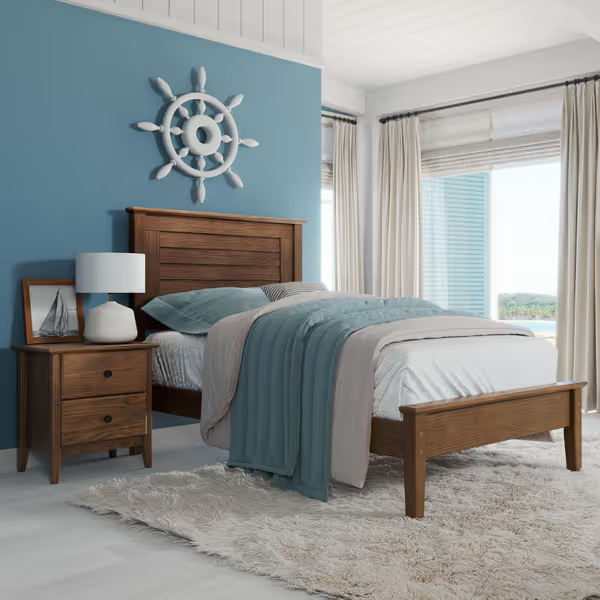
Greenport Solid Wood Platform Bed
How can I verify "non-toxic" and "eco-friendly" claims?
Many brands use vague terms like "eco-friendly" without substantiation. Look for these specific certifications that matter:
- GREENGUARD Gold: Tests for over 10,000 chemicals and volatile organic compounds (VOCs)
- FSC Certified: Ensures wood comes from responsibly managed forests
- OEKO-TEX Standard 100: Certifies textiles are free from harmful levels of toxic substances
- Cradle to Cradle Certified: Assesses material health, reutilization, and renewable energy use
"Natural" or "organic" finishes mean little without specifying the finish chemistry. Water-based finishes typically contain 60 to 90 percent fewer VOCs than solvent-based alternatives. Ask specifically about the binder system, acrylic resins generally offer better durability and lower emissions than alkyd-based finishes.
What's the deal with formaldehyde in children's furniture?
Formaldehyde remains the most concerning compound in discussions of non-toxic toddler beds. While necessary in some manufacturing processes, it becomes problematic when excess remains in final products. The concern isn't just immediate off-gassing but cumulative exposure in small, enclosed spaces where toddlers sleep.
The CARB Phase 2 standard (California Air Resources Board) limits formaldehyde emissions to 0.05 ppm for composite wood products. However, this still permits measurable emissions. For true formaldehyde-free toddler beds, look for solid wood pieces finished with water-based, formaldehyde-free coatings, like the GREENGUARD Gold certified finishes increasingly common among sustainable children's furniture brands.
If you can smell it, plan to air it. Even beds claiming "zero VOC" may have detectable odors during initial off-gassing. Proper ventilation reduces this timeline significantly.
How does wood type affect safety and durability in small spaces?
In compact living situations where furniture placement is constrained against walls or in tight corners, wood choice directly impacts safety and longevity:
- Pine: Affordable softwood that's easy to repair but shows dents
- Birch: Denser hardwood with excellent strength-to-weight ratio
- Maple: Extremely hard and durable but more expensive
- Beech: Similar properties to maple at lower cost
For renters or those in micro-apartments, consider how easily the bed can be moved through tight doorways. Solid wood beds under 50 lbs (like many pine constructions) offer the best combination of durability and maneuverability. Weight matters when you need to shift furniture for cleaning or rearranging, that narrow hallway in your NYC apartment won't forgive a 100 lb monstrosity.
Which eco-friendly toddler beds deliver across different budgets?
After testing multiple options in my own small-space home, these stood out for their combination of low emissions, space efficiency, and true durability:
Budget-Friendly ($150 to $300)
- Fantasy Fields Recycled Toddler Beds: Made from recycled pressed wood with non-toxic finishes. Watch for adequate ventilation as engineered wood requires longer off-gassing.
- South Shore Savannah: Canadian-made with CARB-compliant particleboard. Ensure proper room ventilation during initial weeks.
Mid-Range ($300 to $500)
- Grain Wood Furniture Greenport Platform Bed: Made from 100% solid pine with non-toxic, low-VOC finish from renewable sources. Its simple design maximizes under-bed storage space, crucial for small rooms. The optional center rail provides stability without adding visual clutter. The twin size fits standard crib mattresses (35"x51.6") with room to grow into toddler sheets.
Premium ($500+)
- Oeuf Perch Toddler Bed: GREENGUARD Gold certified with sustainable materials and water-based finishes. Its compact footprint (39"x73") fits awkward spaces while maintaining safety clearances.
- Sodura Zoom: Solid birch construction with thorough safety certifications. Excellent for tight layouts with its low-profile design.
What's my action plan when bringing home a new eco-friendly toddler bed?
Even verified low-VOC furniture benefits from proper airing. Here's my evidence-based approach:
- Unbox in a ventilated area (garage, balcony, or well-ventilated room) for 48 to 72 hours before assembly
- Assemble away from sleeping areas to contain initial off-gassing
- Use a VOC meter (even budget models work) to track air quality improvements
- Maintain cross-ventilation for 2 to 4 weeks, especially in humid climates where off-gassing accelerates
- Introduce gradually: place the bed in the room for increasing durations while monitoring your child's reaction
My own transition involved airing our first toddler bed in the hallway for a week while tracking VOCs; the headache disappeared as the odor dissipated. This simple protocol makes the difference between a bed that merely looks safe and one that is safe for your child's developing systems.
What maintenance plan ensures longevity without compromising air quality?
Your maintenance plan should focus on preserving the finish chemistry without introducing new toxins:
- Cleaning: Use only water or mild castile soap, never petroleum-based cleaners that degrade finishes
- Repairs: Address scratches immediately with matching non-toxic wax to prevent moisture absorption
- Rotation: Rotate mattress position monthly to prevent uneven wear on support slats
- Inspection: Check hardware monthly for tightness, especially in humid climates where wood expands/contracts
For small-space households, this maintenance ensures your green toddler bed options remain functional through multiple children without needing replacement, a critical factor when square footage costs premium dollars.
Creating truly calm rooms: it's about what you can't see
The most peaceful toddler rooms I've measured weren't defined by minimalist decor or expensive sound machines, they had the cleanest air quality. When selecting eco-friendly toddler beds, prioritize verifiable material health alongside space-saving designs. Your child's sleep quality depends on what they're breathing as much as what they're sleeping on.
Remember: if it smells, it tells. That subtle chemical odor isn't just unpleasant, it's your indoor air quality reporting system. By choosing solid wood with verified low-VOC finishes and implementing a thoughtful airing protocol, you're not just buying furniture, you're investing in calmer nights and more peaceful mornings.


